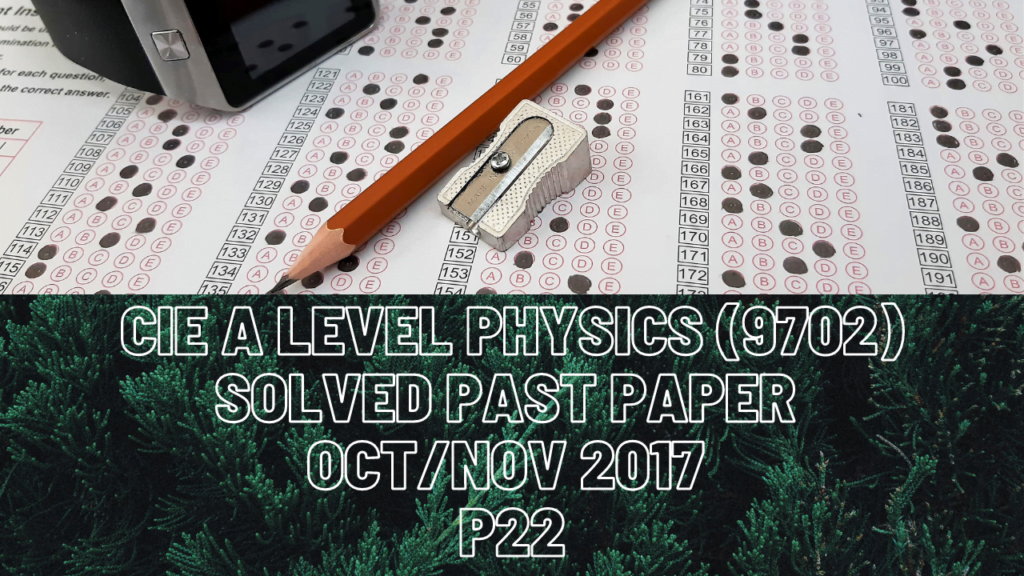
CIE A Level Physics Solved Past Paper Oct/Nov 2017 P22
1 aii) Random errors are caused due to human error which, in this case, can be parallex error. To reduce the amount of this kind of error, we must take diameter readings several times from multiple positions along the wire and then take average of your values.
ii) % uncertainty of stress will be sum of % uncertainties of all quantities that are getting divided or multiplied so its F and d. Since d is getting multiplied twice so we must take its % uncertainty twice. % uncertainty= (absolute uncertainty/value)*100%
iii) In these kind of questions, examiners expect candidates to write the value of stress and its absolute uncertainty in the simplest form possible without repeating numbers. Here stress has 10 to the power 8 and its absolute uncertainty has 10 to the power 7 so to simplify the magnitudes, we will give same powers to 10 for both stress and its absolute uncertainty. That will make decimal change its place in the absolute uncertainty.
2 bi) The torque always has two forces that are perpendicular to each other and produce moment in one direction.
3 eii) The acceleration will always decrease when there is resistance to motion and at that time drag or viscous force is increasing.
4 bii) Lowest point to highest point is distance between two adjacent anti-nodes which is half a wavelength or takes T/2 where T is the time period.
iii) Particles P and Q are separated with a node in between them hence they are out of phase with a phase difference of 180 degrees.
5c) The first credit is for co-ordinates (0,2) which is when t=0, the charge is 2cm away from the left plate, and (T,0) which is when t=T, the charge is on the left plate. The other credit is for the kind of slope that you will draw. REMEMBER that a resultant force due to electric field acts on the charge which is constant so the charge must move with constant acceleration towards the left plate. Acceleration is an increase in speed which also means an increase in gradient since the gradient of displacement versus time is speed. An increase in gradient can be shown with the graph gradually getting steeper. DON’T GET CONFUSED WITH CONCAVE DOWN GRAPH. Only the slope is negative but it’s an increasing one.
6 ciii) Power dissipated depends on two quantities-current and resistance. Since current is not changing, when diameter decreases, resistance must have increased. As a result, power dissipated increases too.
7c) For these questions, DON’T forget to convert eV to J. 1eV of energy is equivalent to 1.6*10^-19J of energy.